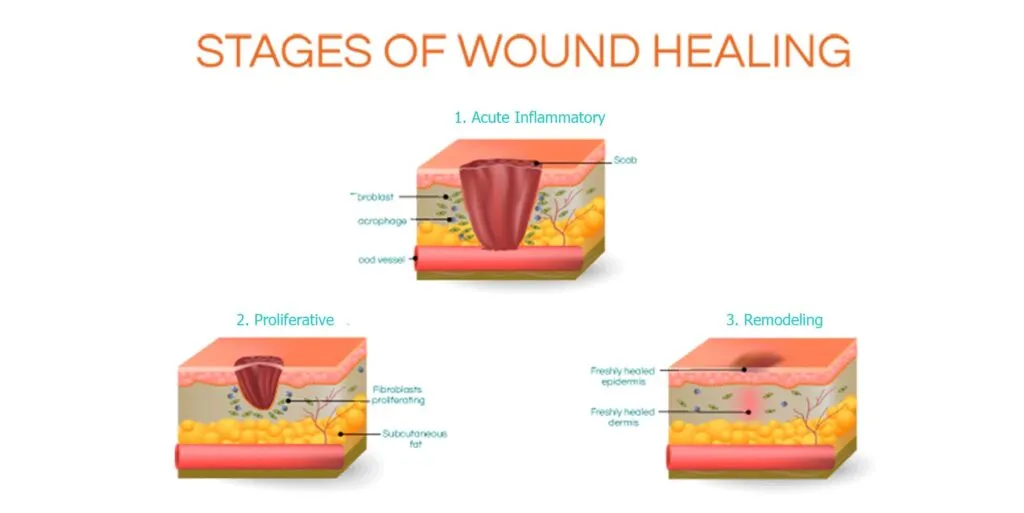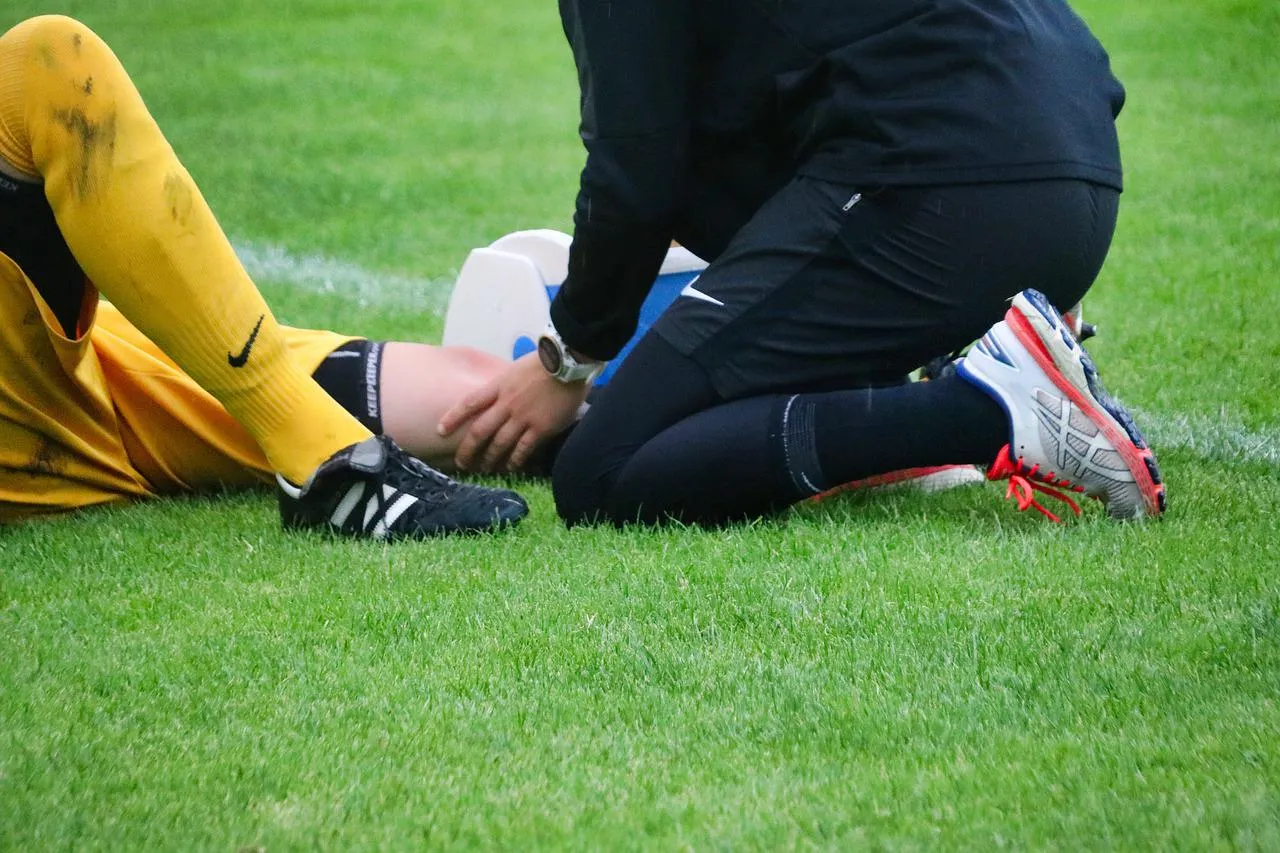When our body goes through soft tissue injuries such as a muscle strain or ligament sprain, normal cellular function is impaired. The soft tissue structure in our body goes through the natural healing process throughout specific phases of healing after the injury. In each stage of the healing process, we can help you ease a healthier healing process, speed up the recovery, protect the injury, regain strength, and boost scar tissue mobility.

Here are the Stages of Tissue Repair:
1. Acute Inflammatory Phase: Day 1-7
- Acute Inflammatory begins right after the injury when the injured blood vessel leak and discharges (made of water, salt, and protein) causing bruises, blisters, abscesses, or bumps. Inflammation controls excessive bleeding and infection. During the inflammatory phase, damaged cells, pathogens, and bacteria are removed from the wound. Inflammation is a natural process of wound healing the only problem is if it continues to swell for a long period of time.
Commonly seen during the Inflammatory Phase
- White blood cells
- Growth Factors
- Nutrients and enzymes create the swelling
- Heat
- Pain
- Redness
2. Proliferative Phase: Can begin on Day 4, up to 6 weeks
The wound enters to Proliferative phase when the wound is clean out, where the main focus is to fill and cover the wound.
The Proliferative phase features three distinct stages:
A. First Stage: Filling the wound
- shiny, deep red granulation tissue fills the wound bed with connective tissue, and new blood vessels are formed.
B. Second Stage: Contraction
- the wound edge contract and pull toward the center of the wound.
C. Third Stage: Covering the wound (Epithelialization)
- Epithelial cells appear from the wound bed and begin to move across the wound bed until the wound is covered with Epithelium.
3. Remodelling Phase/ Maturation Phase: As early as 2-3 weeks, up to months or years
- The new tissue is slowly gaining strength and flexibility during the Maturation phase. In this stage the collagen fiber reorganizes, the tissue remodels and matures and there is an overall increase in durability.
- The healing process is unique and complicated, and it is also susceptible to interruption due to local and systemic factors, including:
- Moisture
- Infection
- Age
- Nutritional status
- Body type (systemic).
If the right healing process were established, the body will work in a remarkable way to heal and replace devitalized tissue.



